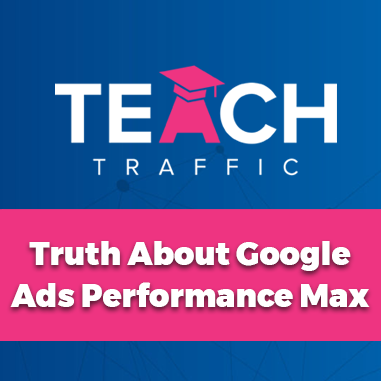What Google DOESN’T Tell You About Performance Max
Powered by Embed YouTube Video
Understanding Performance Max campaigns holds particular significance for individuals with ongoing campaigns, as these can significantly impact their performance. In this article, we will cover three crucial aspects that Google doesn’t openly share, but are essential for you to know if you’re managing active campaigns.
1. Performance Max is a High-Priority Campaign
So the first thing Google won’t tell you about performance Max, is that it’s what’s called a high priority campaign. That means that it takes precedent over really any other campaigns that you are running in your existing Google Ad Account.
So if you’ve got campaigns that are running, maybe a shopping campaign, or a search campaign, and you decide to launch a performance Max in conjunction with those other campaigns, don’t be alarmed if suddenly your existing campaigns are not getting impressions, it’s not getting clicks, therefore not spending any money.
And, obviously having a decline in performance. That’s because performance Max, as I said, is a high priority campaign. And it takes precedent in terms of the impressions and where it will, your ad will be shown.
Now, you might be okay with that. Some people aren’t, especially if they’ve got really well performing search campaigns and shopping campaigns. So just know that before you launch your performance Max, I’ll show you what I mean.
For example, I’m in a live Google Ad Account here:
We’ve got the last 14 days worth of data, here are a bunch of performance Max campaigns that are getting lots of impressions and clicks. And you’ll see I’ve got some normal shopping campaigns here that are getting some impressions.
But, you know, if I went back in time, you will see that they have significantly less impressions and clicks. So that’s the first thing Google won’t tell you.
2. It’s Hard To Assess The Performance Of Your Asset Groups
The second aspect Google doesn’t disclose is how challenging it is to evaluate the performance of your asset groups. Let me illustrate this for you.
you’ll see it doesn’t actually give me performance data. So I’ve got a bunch of different asset groups, in different campaigns, but it doesn’t actually tell me really any information about it doesn’t tell me in impressions, it’s had clicks, click through rate, or anything like that.
So just also know that when you have multiple asset groups, in a performance Max, or even just one, like it isn’t the case, for this particular performance Max, we have multiple asset groups and other ones, that it’s gonna be really hard to assess the performance, you kind of have to get to dig pretty deep within the campaign to see the performance.
3. You can’t really optimize it
Google doesn’t thoroughly disclose that optimizing Performance Max campaigns can be challenging. While they provide more information on its performance, including some search term data, the ability to add negative keywords is limited. Despite having a Google representative, requesting them to add negative keywords isn’t straightforward and doesn’t offer the same level of control as in typical search or shopping campaigns, leading to potential wasted ad spend.
Moreover, optimizing Performance Max remains complex due to its inherent opacity regarding performance improvement strategies. Unlike other campaign types where advertisers can choose specific networks like Search, Display, or YouTube, Performance Max automatically showcases ads across various platforms without offering clear insights into budget allocation or platform-specific spending. As a result, transparency regarding ad placement is minimal.
